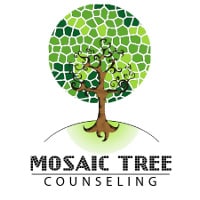Self-Mutilation
Self-harm, or an injury inflicted on oneself, often by cutting, or burning, is generally a sign of intense inner turmoil, anxiety, and/or suppressed emotions. Self-injuring behavior is not the same as a suicide attempt: Though some individuals who self-harm may attempt suicide, in general, acts of self-harm do not indicate a desire to end one’s life. A person might harm him or herself to express pain, anxiety, or other emotions or to maintain a feeling of control over his or her body when other situations in life seem outside his or her control. This behavior often develops in adolescence and, if left untreated, may continue for many years (Kerr, Muehlenkamp, & Turner 2010).

Self-harm is a form of emotional release, but it can lead to complications if untreated. Therapy can help people who self-injure develop other coping mechanisms to address their emotional pain. Feelings of inadequacy, low self-worth, and self-hatred are some of the emotions that people who self-injure might experience, and a therapist who specializes in treating self-harm will work with an individual to discuss these feelings, identify the source of the emotional pain, and develop strategies to manage and reduce that pain. One of our therapists can help a person in treatment learn about and implement self-esteem exercises and behaviors such as meditation, mindfulness, and creative expression that may assist them in becoming able to handle any future triggering situations without acting on an impulse to self-harm. Group therapy, family therapy, hypnosis, and medications such as antidepressants or anti-anxiety medication may also help some individuals who self-harm as a response to depression or anxiety (Smith & Segal, 2015).
Kerr, P., Muehlenkamp, J., & Turner, J. (2010). Nonsuicidal Self-Injury: A Review of Current Research for Family Medicine and Primary Care Physicians. Journal of the American Board of Family Medicine, 23(2), 240-259.
Kerr, P., Muehlenkamp, J., & Turner, J. (2010). Nonsuicidal Self-Injury: A Review of Current Research for Family Medicine and Primary Care Physicians. Journal of the American Board of Family Medicine, 23(2), 240-259.
Smith, M., & Segal, J. (2015, February 1). Cutting and Self-Harm. Retrieved from http://www.helpguide.org/articles/anxiety/cutting-and-self-harm.htm.
Therapy Modalities
Abuse & Neglect
ADHD
Anxiety
Bipolar
Career Counseling
Communication Difficulties
Couples Therapy
Depression
Eating Disorders
Employee Assistance
Impulsive Behavior
Obsessive Compulsive Disorder (OCD)
Oppositional Defiant Disorder (ODD)
Play Therapy
Posttraumatic Stress Disorder (PTSD)
Self Esteem
Self Mutilation
Shop
Social Skills
Request More Information

